Houseplants aeration is very easy to do without the need to be a plant expert.
Quite a simple tool to perform houseplants aeration.
Like using chopsticks. Yup, right with chopsticks, you don’t have to bother with other tools.
Apart from that, there are several other ways.
But, before you know it, let’s hear Wanda’s story!
Hi, I’m Wanda!
I didn’t really understand the houseplant at first.
In the past, I only planted it, then watered it.
I thought that would be enough, but it wasn’t!
Many of my plants are starting to wither.
I was confused about what happened. I also looked for it.
As it turns out, houseplants aeration by using chopsticks, so the plants get more oxygen.
I immediately tried it, and it really worked.
I am very happy.
Now let’s get started…
The Problem Of Houseplants Aeration

It’s no secret that plants need water in order to grow:
It’s one of the four essential elements of life, along with air, nutrients, and sunlight.
A problem with too much moisture on plant soil is that it blocks off one of its essential ingredients: air.
It is similar to drowning a plant’s roots.
Although plants can survive an occasional over-watering..
..if you repeatedly over-water…
…there is no way for oxygen to enter the soil for the roots to absorb it.
Plants need loose, well-aerated soil to thrive.
Photosynthesis and respiration are the two most important biological processes in plants.
Photosynthesis occurs in the green tissues of plants and…
…involves the conversion of light energy and carbon dioxide to sugars.
These sugars are used to produce energy and water, along with carbon dioxide…
…and oxygen, in the body through respiration.
If the roots of plants cannot absorb oxygen…
…they will not be able to complete one of the most vital processes that keep them alive.
Thus, it is so important to ensure the soil is aerated properly and…
…that overwatering plants can be detrimental to their health.
The Dangers Of Poorly Houseplants Aeration Or Soggy Roots
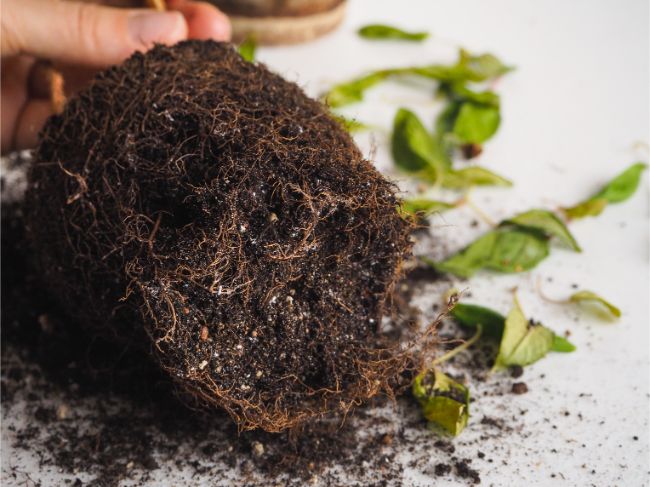
When roots for too long are left in inadequately aerated or overwatered soil, they are at risk of dying:
- Air cannot be taken in by roots and delivered to the plant.
- In the absence of strong roots, fungi and bacteria can invade the plant.
As the organisms attack the roots, damage and destruction are caused…
…eventually leading to the plant’s ruin if not promptly treated.
“Gardens will be the peaceful haven we all need.”
Paul Tukey, American environmentalist
Now…
Houseplants Aeration? How To Do It?
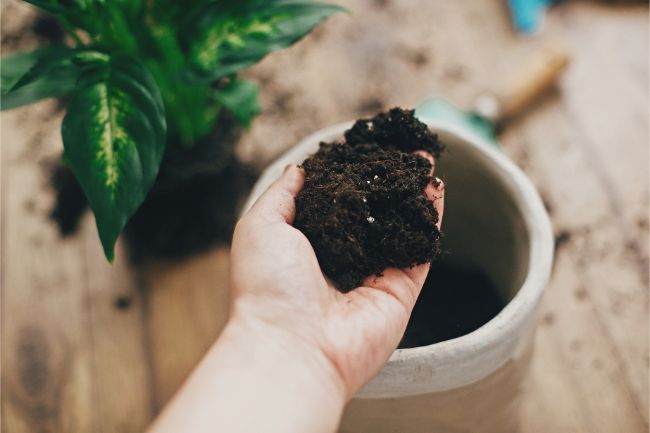
It’s pretty easy to get air to circulate through the soil.
How you approach houseplants aeration depends on the health of the plant and when you aerate.
Potting a New Plant

Even on day one, if you are just potting a new plant or cutting…
…there are things you can do to ensure your plant has a healthy start.
Plants require a special kind of soil, so you shouldn’t simply use any old soil or…
…dig up concrete or dirt from the yard.
The soil you use for your plant should provide draining, air circulation, moisture retention, and nutrient content.
It should also be tailored specifically for that type of plant.
In your potting mix, you can include many different types of materials for houseplants aeration and drainage.
These materials will improve the houseplants aeration and drainage of soil and also help to maintain moisture.
Common Additives to Aerate Soil in Potted Plants
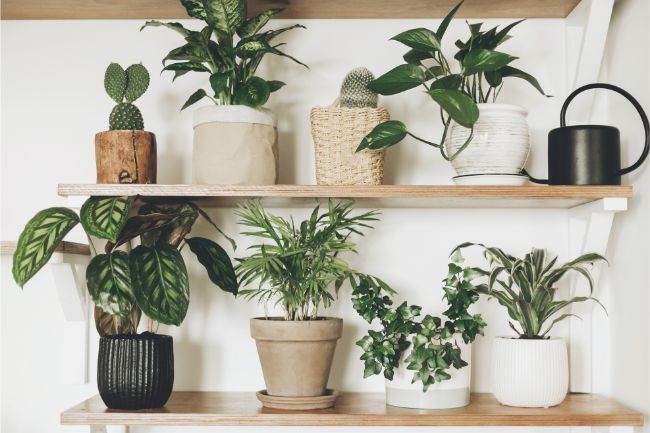
Perlite
Perlite is a light and airy volcanic rock that improves drainage and houseplants aeration.
Wood chips are sometimes substituted for perlite in inexpensive potting mixes.
They act more as a filler than an aerator.
Coarse Sand
Sand particles expand under pressure and break up dense soils, improving drainage.
Vermiculite
This mineral is produced by heating mica chips. It helps aerate the soil…
…while retaining moisture and minerals that can be released gradually as the plants require them.
Ideal for plants with high water requirements.
Peat Moss
Decomposed plants and mosses that are used to make potting soil.
They can hold a lot of moisture and release it when needed…
…while remaining lightweight and providing reasonable houseplants aeration.
Sphagnum Moss
Typically used in hanging plants that lose moisture quickly (but cannot be overwatered)…
…to improve soil moisture retention and houseplants aeration.
Bog moss is commonly dried and used to improve soil housplants aeration and moisture retention.
If you want to grow healthy plants, you need to use soil that delivers nutrients and supports root growth.
Make sure your soil recipe is loose enough for roots to breathe and…
…contains materials to hold and release water when needed.
A good basic potting soil recipe that I often use is;
- 1 part peat moss
- 1 part perlite
- 1 part good quality topsoil
Keep reading…
Making Sure Your Pot Has Airflow
If you have good potting soil, then you need to make sure your container or..
…pot is going to cooperate by providing airflow.
Houseplants aeration is reduced significantly if you use the best soil you can find…
…but your pot prevents air from entering while allowing water to exit.
Depending on the kind of pot you have, the houseplants aeration process may differ.
Check this out:
Clay Pots
/cdn.vox-cdn.com/uploads/chorus_image/image/65892003/old_pot_xl.7.jpg)
Because clay is porous, clay pots provide natural houseplants aeration of the soil..
..increasing airflow to the roots.
This is possible because air and water move freely through the walls of the pot.
Clay’s porous properties are also conducive to water loss from the pot..
..increasing watering needs of your plant.
This is especially helpful for plants that dislike sitting in wet potting soil for a long time.
Plastic Pots

As opposed to clay pots, plastic containers are neither porous nor breathable.
Therefore, they hold in moisture and prevent air exchange.
While the advantage of plastic pots may be that they require less watering…
…they also dramatically reduce houseplants aeration.
Watering must be monitored much more carefully.
Create a few small holes around the pot with a nail or drill using a small bit.
They should not be large enough to fall out, but large enough that excess water can drain out and…
air can get into the soil.
Decorative Metal and Ceramic Pots

It is not possible to increase the porousness of these pots or their airflow.
If the container is large enough one solution would be to double pot a plant:
- In the bottom of the decorative pot, place rocks or stones.
- Make sure that the inner pot of your plant is slightly smaller than the decorative outer pot. It should have drainage holes.
You can enjoy the aesthetics of the decorative pot by placing the inner pot on top of the stones.
This ensures water will drain and air will circulate to the potted plants.
The technique I use with many of my indoor plants is a favorite of mine.
I also enjoy using beautiful decorative pots.
..which add to the beauty of my home and the plants.
This is amazing trick!
How To Aerate Soil In Potted Plants With Chopsticks
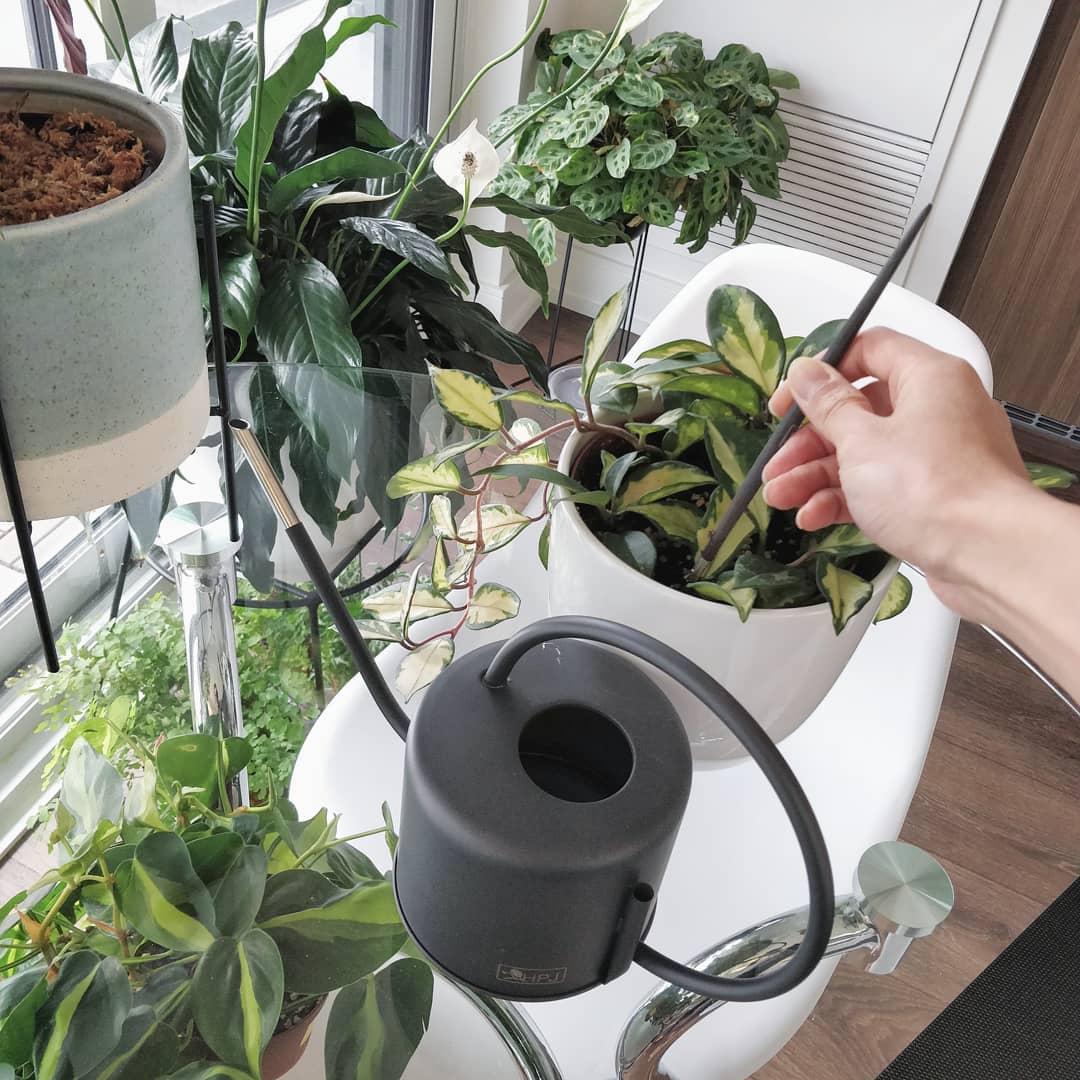
If your plant has already been potted, you might be able to aerate the soil by using chopsticks…
…a stirrer or a sturdy straw.
With the help of this handy gadget, you can gently loosen dirt around the roots…
…as well as poke holes in the soil near them.
The roots of your plant will have improved airflow if you do this in healthy…
…dry soil before watering them, which reduces the danger of waterlogging.
Housplants Aeration That Is Already Overwatered

During the early stages of potting, building in some houseplants aeration is pretty straightforward…
…but that’s not the case when you notice a plant..
..that is already suffering from inadequate houseplants aeration or overwatering.
You need to determine how long the plant has been suffering.
How severe the symptoms are:
Signs Your Plant Is Overwatered
Wilted or Yellowed Leaves
The soil on a plant that appears weak and sallow but…
…is moist to the touch indicates it had too much water and root rot might have set in.
Little Blisters on Leaves
Blisters on your plant are actually edema..
..an indication that it is absorbing more water than it uses.
Brown Leaves
Brown leaves can lead you to wonder if you are watering your garden too much or too little.
You can find out by sticking your finger in the soil.
It may be that the soil requires some water if it is dry beneath the top layer.
However, if it is wet, browning may be an indication of too much water.
Keep reading…
Rotten Smell
There may be bacteria or fungi living in your plants’ soil causing an unpleasant odor.
They take advantage of the roots that are too weak to defend themselves.
Infected roots may be the result of root rot if they have been left untreated for a long time.
Aerate Soil In Potted Plants To Revive Them
The vast majority of overwatering can be remedied.
However, root rot in the soil may make it impossible to restore.
It may be enough to refrain from watering for a few days and…
…lightly aerate the soil with your finger or a chopstick..
..if your plant doesn’t smell and its leaves are just slightly wilted.
Repotting A Plant In Soaked Soil
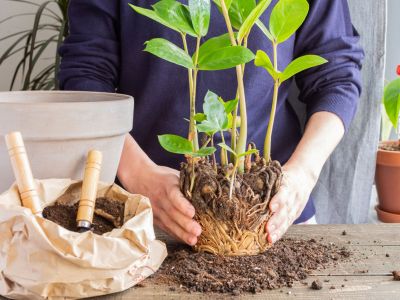
The presence of wilted leaves and an unpleasant odor may indicate that your plant is…
…drowning in its own soil, which indicates it is time to repot it.
If the soil smells rotten, it is not recommended to reuse it.
That odor indicates that bacteria or fungi are alive and well in the dirt…
…and the same problem may recur if you use it again.
The pot should first be washed if you will reuse it:
- Take the plant out of the pot.
- Remove all the potting soil by gently shaking it.
- Remove any excess moisture by rinsing and patting the roots.
- While you prepare the plant’s new home, place the plant in an empty garbage bag while you keep it safe.
- After cleaning the pot with a mild bleach solution, rinse well with water, then fill it with new soil: a fluffy, nutrient-rich soil with plenty of air holes.
- Remove any roots that appear damaged and gently trim the plant’s roots. Carefully place the plant in its new pot and water it well. Water very carefully in the days that follow.
- Make sure not to water on a time schedule! Water when the soil feels dry enough, depending on the water requirements of the plant.
Recovery Time
Plants usually recover within a few weeks.
In some cases, it might take them longer..
..but they recover in most cases.
Your potted plants will live a happier and longer life..
..if their soil is properly houseplants aeration and provided with proper drainage.
Sum Up
Easy isn’t it for your own houseplant aerial?
By housplants aerial, you have given your plants oxygen to keep them alive.
This is very necessary so that your plants will not wither in the future.
Hope this is useful for you!
Conclusion
How? Have you tried it yourself?
Or do you want to share the story of aerial houseplants in your own way?
Share your story in the comments.
If interesting, we will update!
Check out more of our posts like this one here!
I hope you can now take care your snake carefully and grow it big!
Thanks for reading this article! Bye!


